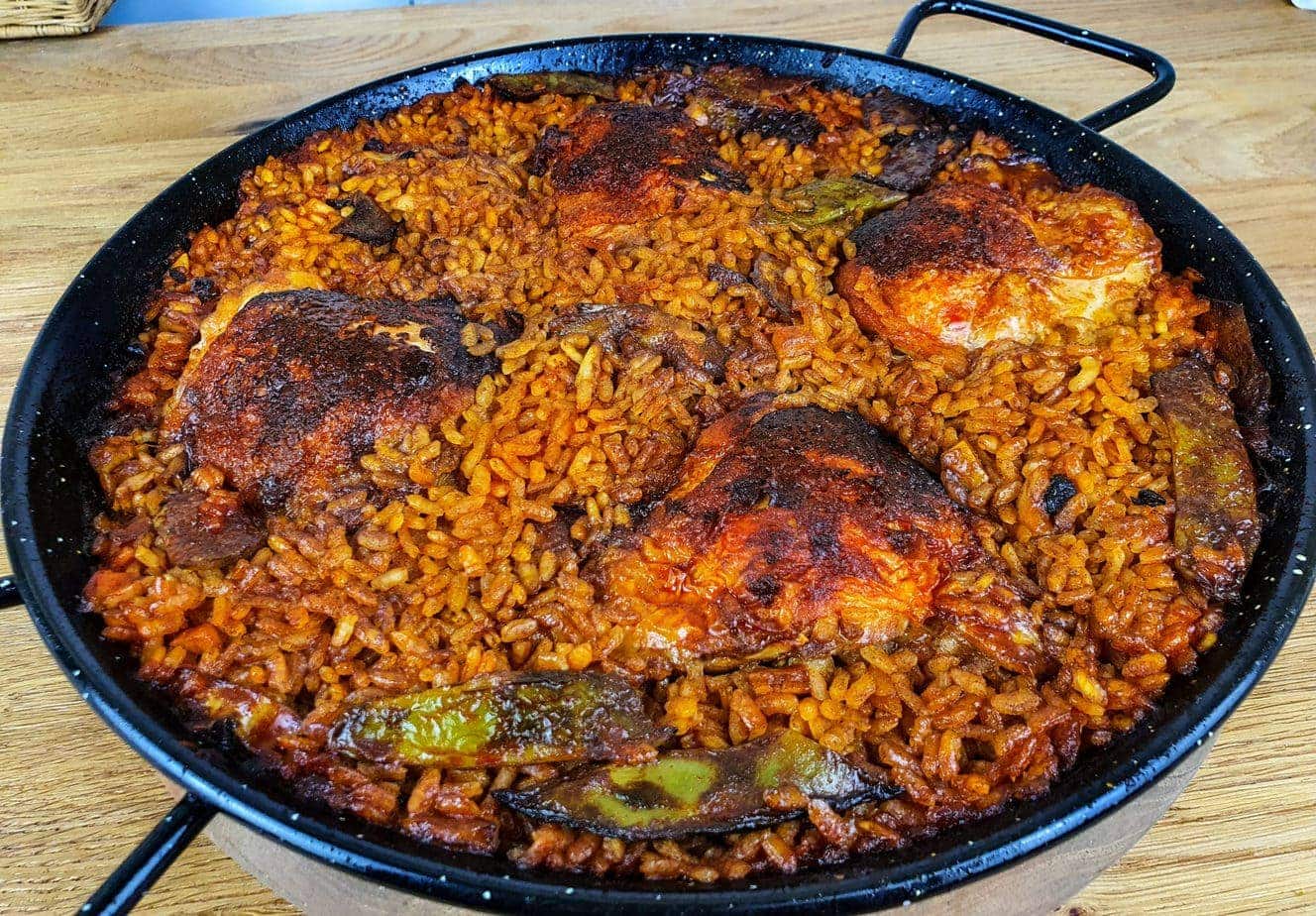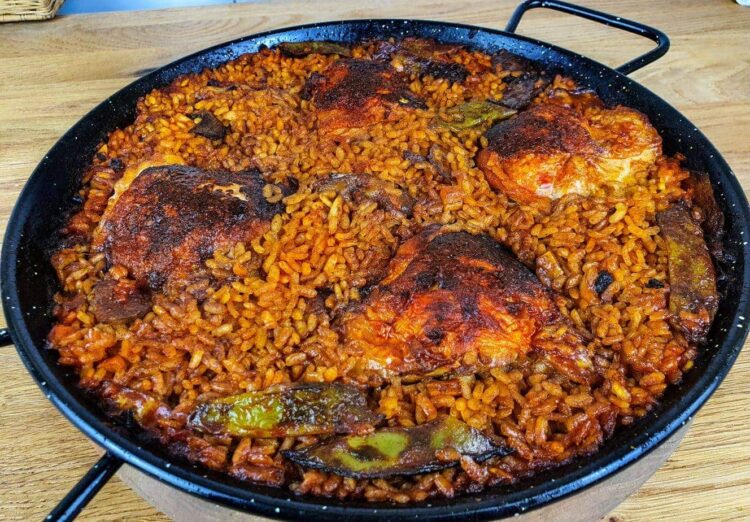What is paella and why is it so popular in Spain?
Paella is, at its core, a Spanish rice dish enriched with a mix of meat and vegetables. This centuries-old classic traces its origins to the 13th century. It was originally cooked over an open fire and, traditionally, didn’t include seafood. I’ll stop there before the purists come for me, because today there are hundreds of delicious variations—chicken paella, seafood paella, black rice with cuttlefish ink, and more.
Paella is one of Spain’s most beloved dishes. The main reason? It’s easy to make, and great flavor doesn’t require pricey ingredients. Beyond that, paella welcomes endless combinations, styles, and flavors. Much to the purists’ dismay, its versatility is exactly why it endures.
How do you make a perfect chicken paella?
Even though it’s simple, if you know me, I like to optimize and get the most out of a dish. The perfect chicken paella takes time, patience, and attentive cooking.
Every region of Spain has its own version, with distinct ingredients and techniques, which makes it hard for outsiders to know what “perfect” means—each region champions its own as the one true paella.
As for me, I’m focusing on Valencian-style paella, skipping the rabbit and doubling down on chicken flavor. So yes, a paella without seafood. I’ll even, in my own way, work in a little chorizo (I can hear the purists clutching their pearls).
- Rice: Use traditional paella rice (short-grain or “bomba”). If you can’t find it, do not use jasmine or basmati—they’re not suitable.
- Meat: Big, meaty chicken thighs have the best fat-to-meat ratio—and the most flavor. Honestly, I can’t see anything else working as well for chicken paella. Good-quality chorizo is also a must.
- Oil: Extra-virgin olive oil, lard, beef tallow, or another animal fat. Definitely not sunflower oil. If you must, in the first step you can—much like with duck breast—slowly render the fat from the chicken skin over low heat
- Broth: Use chicken stock or pork stock—better yet, both. In my experience, chicken stock brings flavor while pork stock adds body (thanks to the gelatin in both). The result is outstanding in the final dish.
- The socarrat : The caramelized rice at the bottom of the pan. It’s many Spaniards’ favorite part of paella. You get it by stirring as little as possible during cooking.
The chorizo controversy
I know it’s controversial, but I think you’ll appreciate my approach. In this recipe, quickly fry the chorizo to render the fat and bloom the spices, then remove it. You can snack on it as is because it’s delicious, or chop it into small pieces and use it to season your chicken paella right on the plate. Trust me—it’s divine.

Ingredients
Meat
- 1 sliced chorizo (optional)
- 4 chicken thighs
Vegetables
- 3 artichoke hearts, quartered
- 100 g snow peas
- 4 garlic cloves
- 1 grated tomato (or puréed)
Spices
- 1 drizzle of extra-virgin olive oil
- 4 teaspoons paprika (ideally smoked paprika)
- 4 rosemary sprigs
- 1 small packet of saffron powder (about 0.5 g)
Equipment and other items
- 300 g paella rice
- 2 L pork or chicken stock (ideally homemade)
- 1 paella pan or a very large high-sided skillet
- 1 roll of aluminum foil
Stock
- a few pork or chicken bones
- water
- 2 peeled onions (left whole)
Instructions
Stock
- Place everything in a lidded pot and cover with water.
- Simmer over medium heat for 3-4 hours.
- Optional: skim off any impurities that rise to the surface.
- Strain the stock.
Paella
- Heat the pan over medium-high heat with nothing in it.
- Add a generous pinch of salt and a drizzle of olive oil.
- Add the chicken thighs, skin side down. Optional: add the sliced chorizo now and remove it after 5 minutes.
- Brown for 7-10 minutes until deeply golden. After about 6 minutes, turn to sear all sides.
- Make a little space in the pan and add the snow peas. Cook for 1-2 minutes.
- Add the artichoke hearts and cook for 2-3 minutes, stirring occasionally but not too much. Let everything brown well.
- Reduce to medium heat and add the garlic cloves. Stir briefly. Let brown for 1 minute.
- Add the paprika, stir, then add the tomato. Return to high heat and stir briefly. Let brown for 2 minutes.
- Add enough stock to almost cover everything. Add the saffron, stir quickly, and bring to a boil.
- Add the rice and stir gently to distribute it.
- When it returns to a boil, stir once and cook over medium-high heat for 10 minutes.
- Reduce to medium heat and cook for another 6 minutes.
- There should still be some liquid, but the level should be below the rice. Cover the pan with aluminum foil and reduce the heat to low. Cook for 5 minutes.
- Turn off the heat and let rest, covered, for another 5 minutes.
Nutrition
For a Chinese-leaning alternative (just for fun), try my fried rice, flavor-bomb edition

